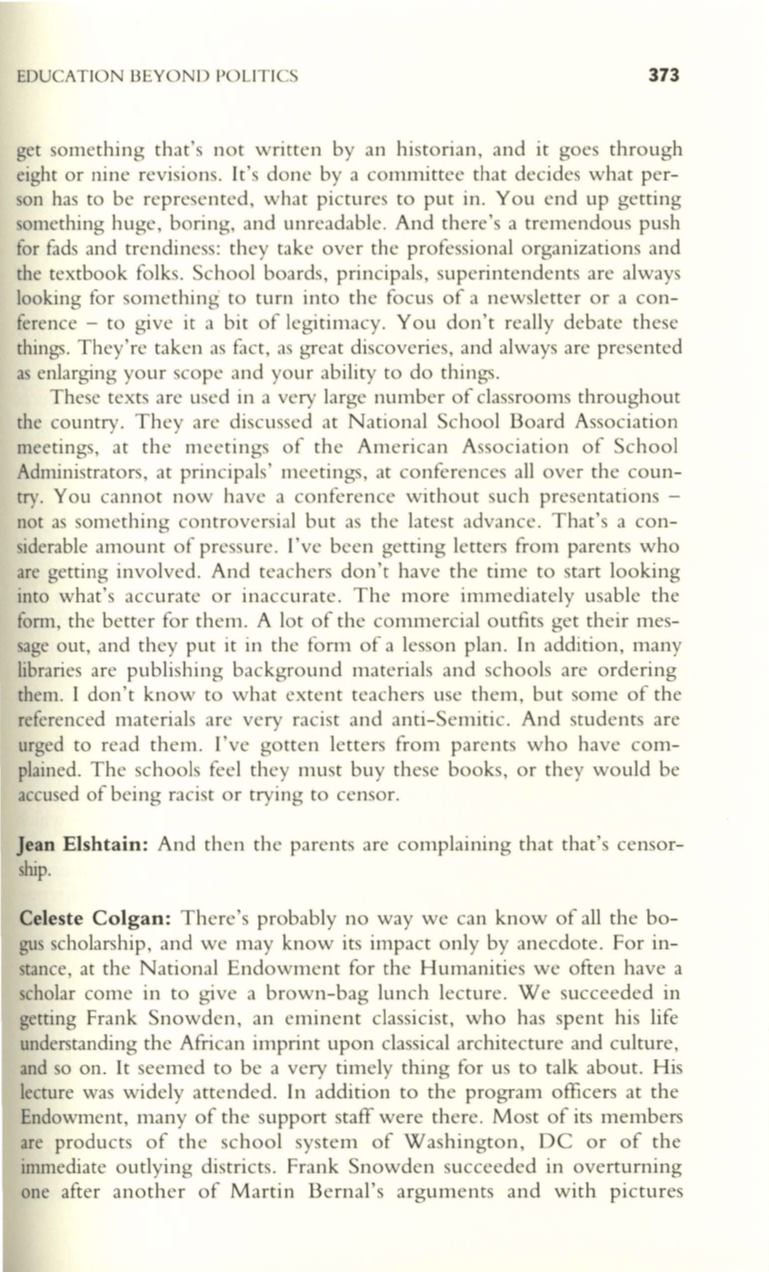
EDUCATION BEYOND POLITICS
373
get something that's not written by an historian, and it goes through
eight or nine revisions. It's done by a committee that decides what per–
son has to be represented, what pictures to put in. You end up getting
omething huge, boring, and unreadable. And there's a tremendous push
for fads and trendiness: they take over the professional organizations and
the textbook folks. School boards, principals, superintendents are always
looking for something to turn into the focus of a newsletter or a con–
ference - to give it a bit of legitimacy. You don't really debate these
things. They're taken as fact, as great discoveries, and always are presented
as enlarging your scope and your ability to do things.
These texts are used in a very large number of classrooms throughout
the country. They are discussed at National School Board Association
meetings, at the meetings of the American Association of School
Administrators, at principals' meetings, at conferences all over the coun–
try. You cannot now have a conference without such presentations -
not as something controversial but as the latest advance . That's a con–
siderable amount of pressure. I've been getting letters from parents who
are getting involved. And teachers don't have the time to start looking
into what's accurate or inaccurate. The more immediately usable the
form, the better for them. A lot of the commercial outfits get their mes–
sage out, and they put it in the form of a lesson plan. In addition, many
libraries are publishing background materials and schools are ordering
them. I don't know to what extent teachers use them, but some of the
referenced materials are very racist and anti-Semitic. And students are
urged to read them. I've gotten letters from parents who have com–
plained. The schools feel they must buy these books, or they would be
accused of being racist or trying to censor.
Jean Elshtain :
And then the parents are cOlTlplaining that that's censor–
ship.
Celeste Colgan :
There's probably no way we can know of all the bo–
gus scholarship, and we may know its impact only by anecdote. For in–
stance, at the National Endowment for the Humanities we often have a
scholar come in to give a brown-bag lunch lecture. We succeeded in
getting Frank Snowden, an eminent classicist, who has spent his life
understanding the African imprint upon classical architecture and culture,
and so on. It seemed to be a very timely thing for us to talk about. His
lecture was widely attended. In addition to the program officers at the
Endowment, many of the support staff were there. Most of its members
are products of the school system of Washington, DC or of the
immediate outlying districts. Frank Snowden succeeded in overturning
one after another of Martin Bernal's arguments and with pictures


